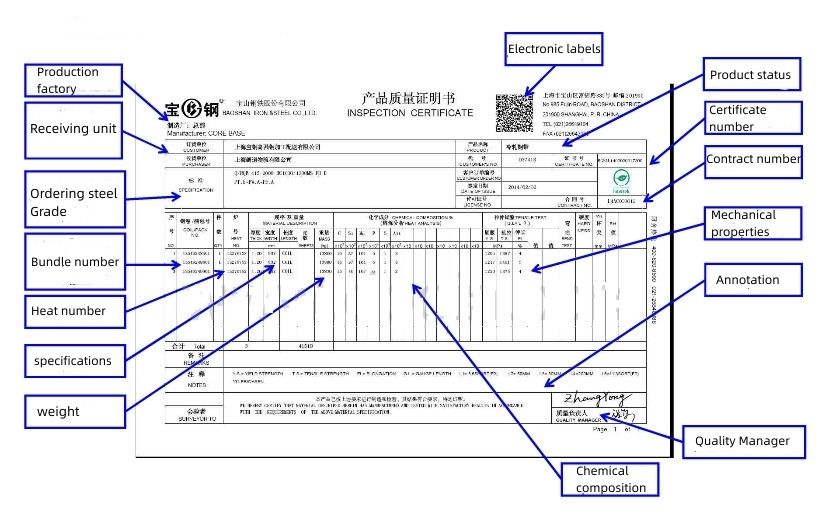Welcome to Qingdao Dashang Metal Co.,Ltd!
Chemical composition
1. C element
As the main alloying element in stainless steel materials, it exists in the form of interstitial solid solution or carbides. Usually, stainless steel materials can be divided into ultra-low carbon steel, low carbon steel, medium carbon steel, and high carbon steel based on the content of C element. Generally speaking, the higher the C content, the higher the strength and hardness of the steel, but the plasticity and toughness will also decrease accordingly; On the contrary, the lower the C content, the higher the plasticity and toughness of the steel, and its strength and hardness will also decrease accordingly. Stainless steel for deep drawing or ultra deep drawing purposes is usually produced using low-carbon or ultra low-carbon components.
2. Si element
Si mainly exists as reducing agent and Oxygen scavenger during steelmaking. When the content is more than 0.5%, it can be considered as an alloying element, which can significantly improve the yield strength and yield strength ratio of stainless steel materials. When the content of Si exceeds 3%, it can significantly reduce the plasticity and toughness of steel, and increase the ductile brittle transition temperature of stainless steel. When the Si content is high, it is easy to produce red iron scales on the surface of hot rolled strip steel, and subsequent acid washing is not easy to clean. Moreover, a high Si content will improve the corrosion resistance of stainless steel and reduce its coating performance.
3. Mn element
Mn can be infinitely miscible with Fe and mainly exists in stainless steel materials through displacement solid solution. It is one of the main strengthening elements in stainless steel materials. Adding Mn can improve the strength and hardness of stainless steel, and improve its "hardenability". Mn can form high melting point MnS with S in stainless steel smelting, thereby weakening and eliminating the adverse effects of S.
4. S element
Generally speaking, S is a harmful element in stainless steel, with high sulfur content. When subjected to pressure processing at high temperatures, it is prone to brittle cracking, commonly known as thermal brittleness. The higher the sulfur content, the more severe the heat embrittlement phenomenon, so it is necessary to control the sulfur content in stainless steel. Generally controlled below 0.045%. Sulfur can reduce the strength of stainless steel, thus facilitating its cutting.
5. P element
P element is also a harmful element in stainless steel, which can significantly reduce the plasticity and toughness of stainless steel, especially at low temperatures. Meanwhile, P is the element with the strongest strengthening effect on ferrite. Therefore, some stainless steel varieties use the method of adding a small amount of P to improve the strength of the material. The combination of P and copper enhances the atmospheric corrosion resistance of stainless steel.
6. Al element
Al is used as a Oxygen scavenger, and as a strong oxidant, it can generate highly fine and ultramicroscopic oxides, which can prevent the grain growth of stainless steel during heating and refine the grain. As an alloying element, it contributes to the nitridation of stainless steel, thereby improving its thermal stability. Generally, the Al content is between 0.02 and 0.1%.
